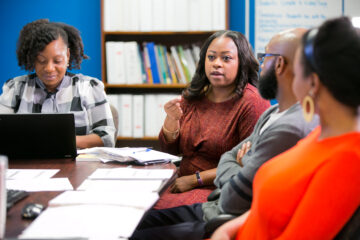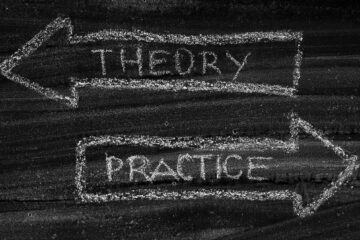Nearly half of U.S. teachers wish they had more opportunities to collaborate with their peers. Two school districts in eastern Pennsylvania, Eastern Lebanon County (ELCO) School District and Twin Valley School District, are supporting teachers by providing these opportunities. In December, they became the first two districts in the United States to participate in Parallel Lessons, which facilitate teacher collaboration both across U.S. districts and between the United States and Hong Kong.

Coordinated by the Centre for Educational Leadership (CEL) at the University of Hong Kong for more than 20 years, Parallel Lessons are peer observations by pairs of teachers from two very different education systems (in this case, Pennsylvania and Hong Kong). The two teachers independently plan lessons on a common topic and then observe each other teaching those lessons. Instead of evaluating the lessons, a group of observers – including the participating teachers, teacher colleagues, school administrators and representatives of educator preparation institutions from both education systems – work together during a debrief conversation to identify contrasts in how the lessons were taught. Identifying these contrasts helps stimulate deep thinking and discussion about how underlying beliefs and approaches vary across education systems and how they impact instruction.
While CEL has facilitated Parallel Lessons between Hong Kong and other education systems, including Singapore and mainland China, since 2001, the Parallel Lessons between Hong Kong and the ELCO and Twin Valley School Districts this December were the first ever to involve teachers in the United States. CEL, NCEE’s National Institute for School Leadership and representatives of both districts worked together to organize and coordinate the experience, which included two U.S.-Hong Kong teacher pairs made up of one teacher from each Pennsylvania district and one teacher from each of two Hong Kong schools. Both pairs taught fifth grade mathematics, but each pair chose a different focus topic for their lessons. The lessons were video recorded so that all observers could view them before participating in the follow-up debrief conversations, which took place a few days after the final lesson was taught.
The first two lessons, both focused on plotting points on a coordinate grid, took place at Twin Valley Middle School in Chester County, Pennsylvania, and a Hong Kong primary school (fifth grade is a primary school grade in Hong Kong). During the debrief conversation, the contrasts between the lessons were used as starting points for broader discussion. For example, because the Hong Kong lesson incorporated iPads while the U.S. lesson used hands-on games and activities, the group explored some of the benefits and drawbacks of classroom technologies. Questions raised included: When lesson planning, what factors help determine whether to use classroom technologies, hands-on activities or both? How can we ensure that technology is used to promote learning rather than for its own sake? How, as in the case of these lessons, can both technology and hands-on activities promote high levels of student engagement?
The next two lessons took place at ELCO Intermediate School in Lebanon County, Pennsylvania, and a second Hong Kong primary school. These lessons focused on the concept of nets, which are two-dimensional patterns that can be folded to form three-dimensional shapes. During the debrief conversation, differences in lesson structure led to discussion of student choice and the factors that influence its role in the classroom. For example, cultural beliefs and expectations about what learning looks like might prioritize different balances between teacher-led instruction and student exploration. Differences in instructional time and class size can also have an impact. The debrief also touched on the use of thoughtful, scaffolded teacher questioning to promote deep student understanding, as observed in both lessons. Questions raised included: How do pre-planned lines of questioning complement questions developed or adapted in the moment to meet students’ needs? What is the balance between guided teacher questioning and allowing students time to talk, brainstorm and develop their own ideas?
Neither debrief reached definitive conclusions on the questions raised, because the goal was not to do so. Instead, the goal was to use the contrasts as an entry point for exploring questions and themes that are relevant across both education systems, with an eye toward improving student learning. In addition to discussing these contrasts, the teachers reflected on what they had learned from each other and from the process, pointing to specific elements of each other’s lessons that they might like to borrow in the future. For example, one teacher pointed to a mnemonic device in his peer’s lesson that helped students remember the order of (X,Y) coordinates, while another teacher commented that she was inspired by her peer’s approach to student questioning.
At their core, Parallel Lessons are about peer observation, which is one of the least common but potentially most powerful forms of teacher collaboration in the U.S. And as described in an earlier CIEB piece, the Parallel Lessons process has several structural elements that set it apart from traditional within-school peer observations: participants in Parallel Lessons conduct mutual, not one-sided, peer observations; these observations take place across two very different education systems; and the observations and debrief conversations include educators in a variety of roles. Each of these elements facilitates meaningful collaboration in ways often not seen in other professional learning opportunities currently available to teachers in the United States.

Parallel Lessons give teachers opportunities to observe each other and discuss each other’s lessons, rather than conducting one-sided observations and providing feedback. This format is likely to feel less evaluative than a one-sided peer observation and encourages a two-way exchange of ideas to foster peer learning.
The international component of Parallel Lessons highlights contrasts and prompts reflection in ways that U.S.-only peer observation might not. While there is often a great deal of variability in teaching practices across U.S. states and districts, and even within schools, similarities in underlying beliefs can mask these differences. Conducting peer observations across education systems refocuses attention from small contrasts, like how student participation is recorded and graded, to more significant contrasts, like how and with what frequency teachers and students interact. And in an increasingly globalized world, facilitating this cross-system collaboration helps build an international community among teachers, much like in other professions. When Parallel Lessons involve more than one U.S. district, as they did in December, they facilitate collaboration and community-building among U.S. teachers as well.
Finally, the inclusion of additional observers in the Parallel Lessons process broadens the range of perspectives involved while still maintaining focus on just one pair of lessons. Teachers are able to discuss their own lessons with and receive personalized feedback from observers who likely have not previously visited their classrooms, such as university-based content experts. The result is rich discussion that is informed by a wide variety of views from across the education community but still relevant to teachers’ daily practice.
Reflecting on what is particularly exciting about Parallel Lessons compared with other types of professional learning opportunities, Superintendents Dr. Robert Pleis of Twin Valley School District and Julia Vicente of ELCO School District pointed to the centrality of collaboration, both across districts and internationally; the opportunity to make teaching practice public in order to learn from others; and the chance to leverage diverse perspectives to examine instruction through a different lens. Both superintendents described Parallel Lessons as uniting a range of educators with different perspectives – including both classroom teachers and other educators, in both the United States and abroad – to pursue the common goal of professional learning.
“Whether you’re a student teacher, a classroom teacher or an administrator, we’re all still teachers,” said Superintendent Vicente. “And so how can we change the structure of how we learn from one another and really take it to this next level?”
“We’re all after the same kinds of things, I think, as educators. This process illuminates that,” added Dr. Pleis.





